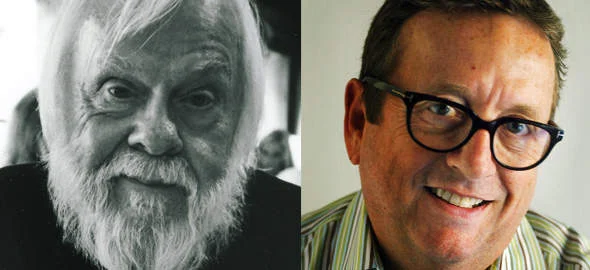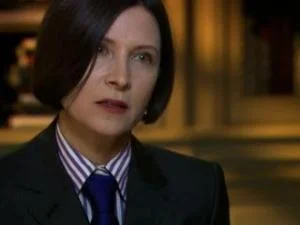Video artist Doug Aitken has been recording conversations with a wide range of cultural figures from the fields of visual art, music, cinema, photography, and architecture for his recent installation work entitled The Source. No stranger to the interview format, Aitken published the 2005 book Broken Screen: Expanding the Image, Breaking the Narrative, which in a rather similar manner offered up discussions with twenty-six other artists. Several iterations of The Source, an ongoing project, have been already shown, most recently at the 2014 Sundance Film Festival held in January, and earlier on in Liverpool, England. Interviewees include: Beck, Liz Diller, Theaster Gates, Mike Kelley, Tilda Swinton, Jack Pierson, and James Turrell. (Jack White: "Do we want Michelangelo or Robert Johnson to have a blog? We don't want to. We are telling people exactly what we think about certain topics. I don’t know what Robert Johnson or Michelangelo thought about those topics. There’s beauty in that mystery.") Aitken's website for the Source project archives much interesting material at: dougaitkenthesource.com/
Some artists are not very good interviewees, that is, they are not keen on being placed in the position of doing a job that either (a) the work itself, or (b) some other kind of folk such as curators, critics, historians might be doing. John Baldessari is not one of those artists. He appears on camera a bit like some giant, dryly humorous polar bear. But this artist arguably created some of the most important conceptual gestures and works of the past fifty years. For a long time Baldessari was an art professor and a kind of “artists’ artist” somewhat under the radar but always there. Wider recognition seems to have increased exponentially since his 2009 career retrospective. I used to carry around a 1990 Rizzoli book (the only major one on his work at that time) and practically memorized certain passages and images. Like a lot of great artists, he was (though not his fault) likely a bad influence on me as I spent a large portion of my MFA degree trying to create Baldessari-styled critiques of photography. But while many of my works may have been terrible, Baldessari’s own ideas, process, measured good humour and lively incorporative mode of viewing the world made a huge impact on me. Thought now that videos on the artist are plentiful on the interweb, I would post a few here. You can also watch some of Baldessari's videos in full as well as another good 1990 documentary on the artist by Peter Kirby entitled Some Stories here: http://www.ubu.com/film/baldessari.html
I definitely do have a thing for reclusive American writers: JD Salinger, Thomas Pynchon, Harper Lee. (In high school I was so nerdy that I sat in the local university library and looked up unpublished Salinger stories on microfilm. I won’t go into any further detail sorry.) So it might follow that Donna Tartt who just published her third novel within a span of 20+ years and is spoken of as publicity shy might be of interest to me. Well, I did read her massively hyped and massive in sheer-length latest entitled The Goldfinch over the Xmas holidays. I found myself feeling a bit guilty about devouring a book that I am being told by the media around that time to devour (for example I have enjoyed Jonathan Franzen’s essays tremendously but Freedom…!) And I’ve never been a great Dickens reader (poisoned at school) except watching BBC costume dramas—does that count? At any rate, back to Tartt (compared to Dickens by the doorstop creating horror machine Stephen King in the N Y Times) I really enjoyed the first half of the book, a mix between a paranoiac mystery crime story and a behind-the-scenes look at Antiques Roadshow. I guess I did like the fact that despite its utter preposterousness and over the top qualities, it engaged me with smooth prose and a few vivid characters, most significantly Boris, the Russian boyhood friend of the narrator, whose moral code is rather relativistic (to say the least) and focussed on moment-to-moment hedonism and the joyful experience of life. If nothing else would have pulled me along in the novel it is Boris’s wild, enviable spirit, which Tartt conjures obviously with great relish and more subtlety (at least earlier in the book) than many other aspects of the novel. I also read the UK review of The Goldfinch that’s been nominated for “hatchet job” of the year written by Peter Kemp in the Sunday Times. But the aforementioned Stephen King certainly knows his way around narratives that grip huge audiences so he’s quite aware of the tactical moves Tartt made to create what he calls “a rarity that comes along perhaps half a dozen times per decade, a smartly written literary novel that connects with the heart as well as the mind.” I’m still deciding my own verdict, despite having pressed the buttons of my worn (and now extra-worn) Kindle at a rapid click while avoiding wrapping my daughters’ Xmas doodads. But just ran across these video interviews with Tartt who looks a bit like a startled and overdressed Asperger-ish little bird who spouts platitudes in both. That is to say, interesting performances of the “writer in public.” I’m not certain that these clips would have encouraged me to pick up the book if I’d seen them earlier, but they serve as perverse little examples of how big media news “handles” fiction—the obviously clever Charlie Rose always sounds pretty awful in these encounters.
Two videos featuring Lou Reed, one of them an interview recorded shortly before his death last year, and the other a 1983 performance with, to my mind, his greatest post-Velvet Underground band, Fernando Saunders (bass), Robert Quine (guitar), and Fred Maher (drums) who backed Reed in support of the amazing album The Blue Mask. Here is the dark and moving Waves of Fear with a totally deranged guitar solo by Quine. The mellifluous bass of Saunders acts as counterpoint but doesn't remove the edgy feel they cultivated at their peak. Quine and Reed had infamously tense relations, but were a terrific guitar duo.









